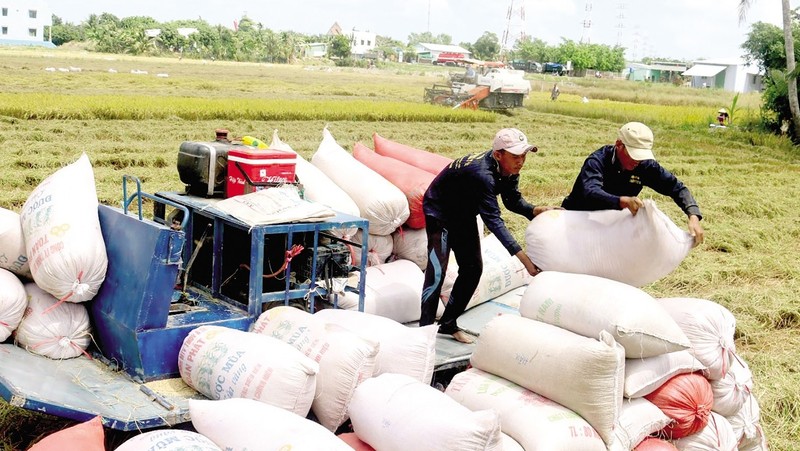Fluctuations in markets, prices
In the first 11 months of 2019, the Philippines ranked first among Vietnam’s export rice markets, accounting for 31.5% of the market share. The country imported 1.97 million tonnes of rice from Vietnam worth US$813.3 million, an increase of 2.55 times in volume and 2.34 times in value over the same period in 2018.
Vietnam also saw an increase in rice export value to othermarkets including Senegal, Ivory Coast, Taiwan (China), Hong Kong (China), among others.
However, Vietnam’s rice export revenue to China in the first 10 months of 2019 decreased sharply by 66.7% compared to the same period in 2018.
In addition to market fluctuations, the export prices of rice in 2019 was also a matter of great concern. The average export price of rice reached US$439 per tonne in the first 11 months of 2019, down 12.7% over the same period in 2018.
The price decline was due to the fierce competition from other rice exporting countries including India, Thailand and Cambodia. Meanwhile, major and establishedmarkets of Vietnam such as China, Indonesia, and Bangladesh all reduced imports from Vietnam which was one of the many factors to drop down the export prices of rice.
It’s predicted that the Vietnam's rice production and processing industry will continue to encounter difficulties due to strong fluctuations in production, demand and prices. The demand for rice in the world market is decreasing as a number of major importing countries have been restructuring their agriculture to improve domestic self-sufficiency. In addition, many markets are setting stricter requirements of traceability and food safety, requiring higher quality of Vietnamese rice.
Improving quality to build brands
A representative from the Vietnam Food Association (VFA) said that it is absolutely necessary to boost the export of high quality rice to catch up with the world market while avoiding excessive dependence onestablished markets in order to foster rice exports in 2020.
This is also the direction for rice production in many localities. Most provinces in the Mekong Delta region have increased the farming area of high quality rice andsynchronously applied updated mechanisation in production, processing and export of rice.
According to the Agricultural Product Processing and Market Development Department, the national brand of Vietnamese Rice was granted a certificate of ‘VietnamRice’ associated with the brand logo and the promulgationof a regulation on the use of the national brand Vietnam Rice.
The Ministry of Agriculture and Rural Development is actively completing international trademark registration under the Madrid system. Vietnam has also builtgeographical indications for some types of rice includingHai Hau rice in Nam Dinh province, Dien Bien rice in Dien Bien province, fragrant Nang rice in An Giangprovince and Hong Dan rice in Bac Lieu province.
Many local rice brands have been protected by collectivecertification such as Kinh Mon sticky rice in Hai Duong province, Dong Trieu sticky rice in Quang Ninh province, Soc Trang fragrant rice in Soc Trang province, amongothers. This is an vital basis for Vietnamese rice to meet the requirements from importing countries and to promoteVietnam's rice brand in the world market.
















